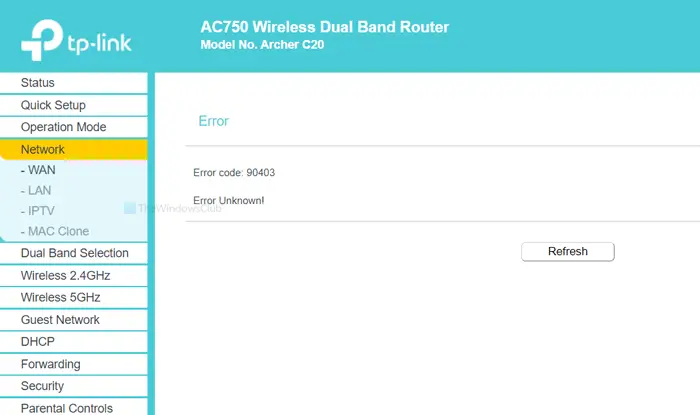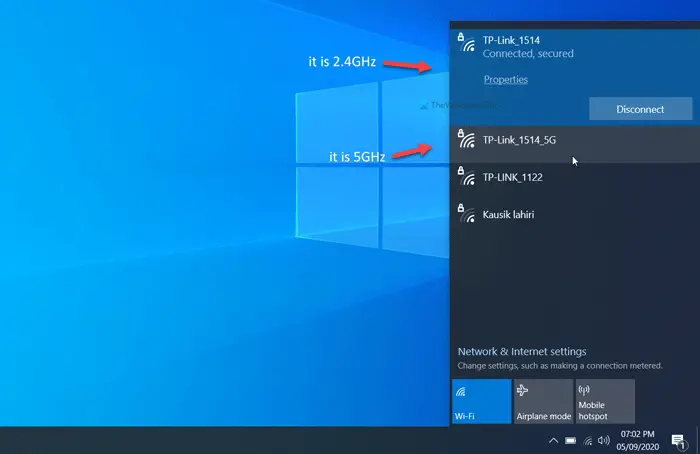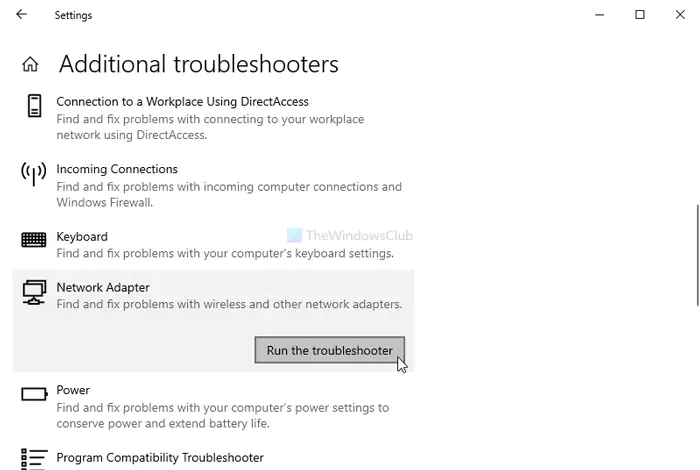If you see Error code 90403, Error Unknown message while accessing the TP-Link WiFi Router Control Panel, then this post will help you. You may face this issue in the Control Panel while setting up for the very first time or while making a change in an already configured router.

The whole error message says something like this-
Error
Error code: 90403
Error Unknown!
It also shows a Refresh button that usually does nothing. However, it is always wise to click on this button first and see if there is a minor internal issue.
Why does it appear
The root cause of this problem is the internet connection’s unavailability from the router’s source while setting it up. Let’s assume that you are setting up the router for the very first time. To do this, you connect your computer to that network, log in to the Control Panel, and enter essential details. While doing all these things, you must keep the connection ON with your router. This error occurs only when you get disconnected from the router while entering the details.
There might be several reasons why you get disconnected from the router all of a sudden.
- The router is not responsive anymore.
- WiFi drivers are making issues.
- The network adapter has some conflict.
This article will help you to find out the source of this problem and solve it.
Error code 90403 in TP-Link WiFi Router Control Panel
To fix error code 90403 in TP-Link WiFi Router Control Panel, follow these steps-
- Check source internet connection
- Use a different computer
- Connect to 2.4GHz network
- Verify WiFi dongle
- Install WiFi driver
- Run Network Troubleshooters
Let’s check out the detailed version of these solutions to know more.
1] Check source internet connection
As mentioned earlier, you must check the responsiveness of the WiFi router. Whether your router is new or old, manufacturing flaws can exist in the device, and that can cause a problem.
Almost all the WiFi routers have an “internet” LED light, which stays ON if they get a source of internet to broadcast your WiFi connection. Check if that LED light is turned ON or not. Alternatively, restart your router, so that common issues get resolved.
2] Use a different computer
If the first solution doesn’t work in your favor, it is time to check your computer. It is best if you use a different computer so that you solve the usual problems at once. Sometimes, the computer’s WiFi component stops working due to internal issues. That is why you may want to opt for a different device to ensure that the problem is being originated from your computer.
3] Connect to 2.4GHz network

If your router has 5GHz as well as 2.4GHz bands compatibility, and you are connected to the 5GHz network, it is better to opt for 2.4GHz. The 2.4 GHz and 5 GHz numbers refer to two different “bands” that your Wi-Fi can use for its signal
In general cases, it doesn’t make any difference since both networks work simultaneously. However, if your device cannot make changes over the 5GHz network, switch to 2.4GHz.
Bonus tip: Don’t hesitate to switch from 2.4GHz to 5GHz if you get the error message over 2.4GHz.
4] Verify WiFi dongle
If you use a Windows 11/10 laptop or an Ethernet connection to set up the router, this solution is not for you. However, if you are using a third-party WiFi dongle to connect your PC to the WiFi network, it is better to verify whether the dongle is working properly.
If your WiFi dongle comes with a driver CD, uninstall and reinstall the existing driver. Even if you do not have a driver CD, you can check out the manufacturer’s website to download the driver and install it in your system.
After that, try the following-
- Insert the WiFi dongle into a different USB port. Instead of inserting it into the CPU case’s port, it is better to use a rear-side USB port.
- Insert the WiFi dongle to a different PC to check whether it is working.
5] Install WiFi driver
If you use a laptop, which is the in-built capability to process a WiFi connection, verify the WiFi driver. Whether you are using Windows 10, 8, or 7, every operating system requires a driver so that it runs everything smoothly. Therefore, make sure that you have installed the latest WiFi driver.
6] Run Network Troubleshooters

Windows 11/10 comes with in-built troubleshooters. Run the following two Network Troubleshooters and see if it helps-
- Network Adapter
- Internet Connections
Although Internet Connections troubleshooter may not show a positive result, it is possible to get something from the Network Adapter troubleshooter.
To run them, open Windows Settings by press Win+I, and go to Update & Security > Troubleshoot. Now find those troubleshooters on your right-hand side, and run them one after one. You can also read out guide to run troubleshooters on Windows 10.
I hope these solutions work for you.
Leave a Reply